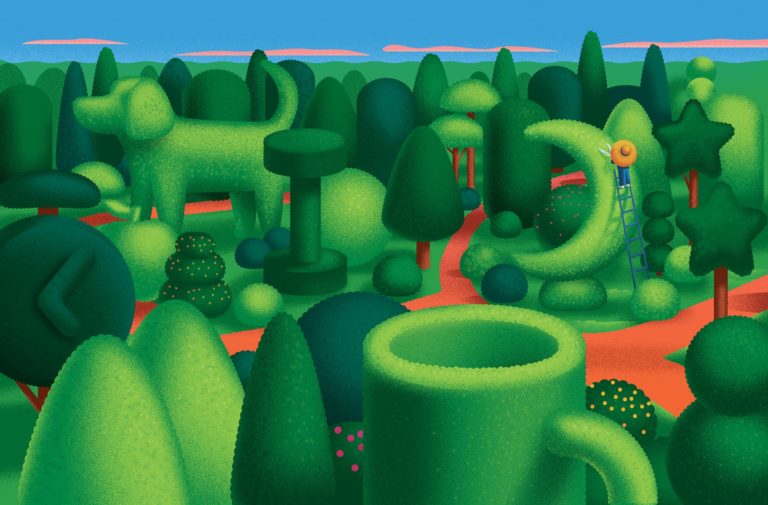Despite its simplicity, it took me a huge amount of thinking to come up with my revolutionary happiness formula: being happier requires you to thinking about feeling good, feeling bad, and feeling right. (Ok, I know the formula sounds a bit banal, but zoikes, it took me a lot of hard work to recognize this essential truth.)
In other words, to be happier, I need to boost my good feelings, put a stop to my bad feelings, and pursue my right feelings.
But I felt that some element was missing from this formula…something that described the process of being happy, the frame of mind, or the conditions…I couldn’t put my finger on it.
I wanted to account for the fact that people seem programmed constantly to be striving, to be stretching toward happiness. For example, studies show that people think that they will be slightly happier in the future than they are in the present. And research shows that a sense of purpose is very important to happiness. And why do happiness researchers report that children don’t make people happier, and yet parents insist that their children are a major source of joy?
I thought about William Hazlitt’s observation, “Indolence is a delightful but distressing state: we must be doing something to be happy,” and Bertrand Russell’s observation, “To be without some of the things you want is an indispensable part of happiness.” I agree, but my formula didn’t account for these observations.
I searched for the missing concept—was it striving? Advancement? Purpose? None of these words seemed right. My formula wasn’t complete.
Then a reader posted a quotation from William Butler Yeats. “Happiness,” wrote Yeats, “is neither virtue nor pleasure nor this thing nor that, but simply growth. We are happy when we are growing.”
That word, “growing,” snapped everything into place. Of course. Growth. Growth helps explain the happiness brought by children, by gardens, by pay raises, by stamp collections, by training for a marathon, or learning to use PhotoShop, or cooking your way through a Julia Childs cookbook.
My father was a great tennis player and played a lot when I was growing up. At some point, he started playing golf, and over time, gave up tennis. I asked him why. “My tennis game,” he explained, “was gradually getting worse, but my golf game is gradually improving.”
The hedonic treadmill means it’s easy to grow accustomed to some of the things that make you “feel good.” An atmosphere of growth offsets that. Anyway, many experiences that involve growth aren’t susceptible to adaptation at all.
So my new-and-improved formula for happiness is this: being happier requires you to thinking about feeling good, feeling bad, and feeling right, in an atmosphere of growth.
The wording is clunky, but I think I’ve hit on something important.
To feel happy, it’s not enough to have fun with your friends, and not feel guilty about yelling all the time, and feel like you’re working in the right job; you also need to feel growth—a sense of learning, of betterment, of advancement, of contributing to the growth of others.
This is certainly true in the spiritual sense, and I do think that material growth is very satisfying, as well. As much as folks say that money can’t buy happiness, for example, it’s gratifying to have more money this year than you had last year. And it gives a boost to clear out your closets so that you open the doors to see neat shelves instead of an overflowing jumble.
For months, I’ve been thinking about feeling good, feeling bad, and feeling right. Now, with my new formula, I’m on the lookout for ways to incorporate more growth into my life: learning new skills, working on satisfying projects on which I can make progress, celebrating milestones, fostering the growth of others.
Today is the Little Girl’s second birthday, and on the way to school, the Big Girl and I reminisced about everything that happened on February 12, 2005. Talk about an atmosphere of growth—there’s nothing like having a baby and watching that baby change over the course of two years.




